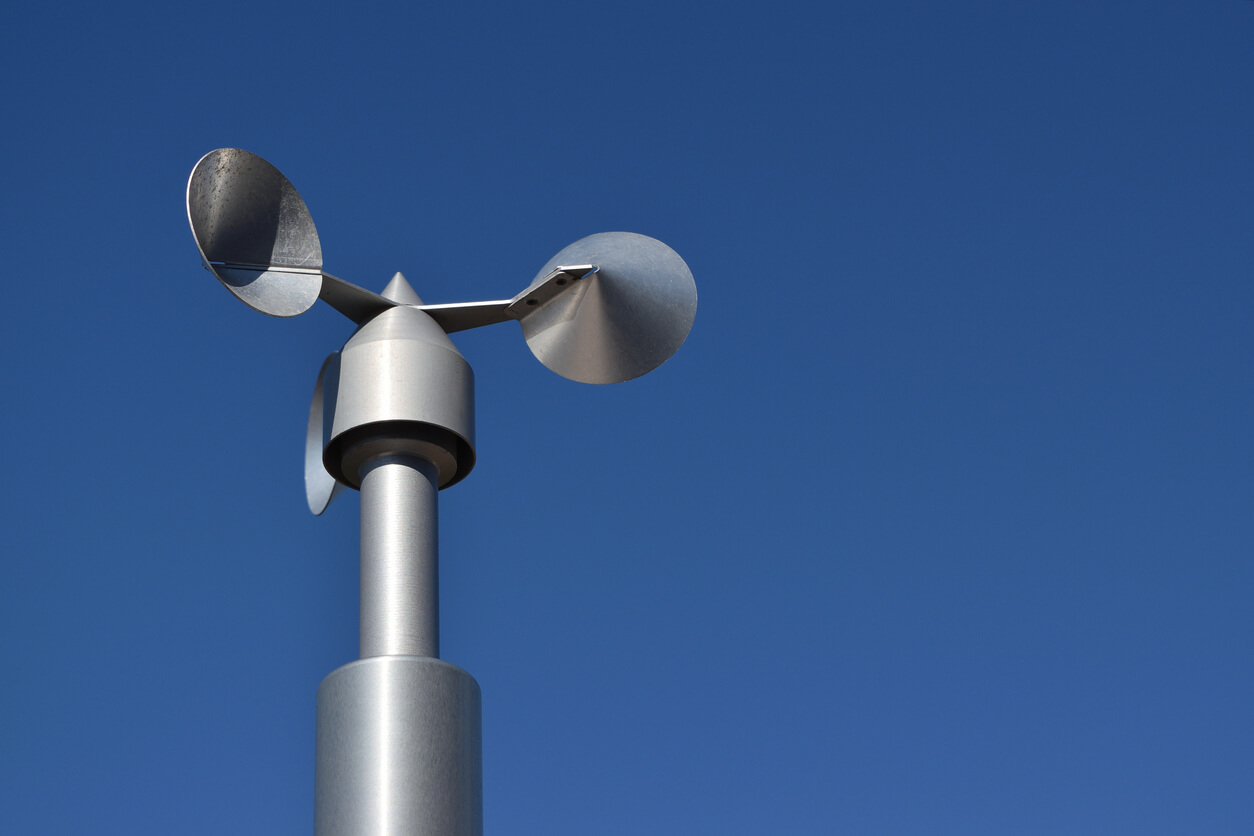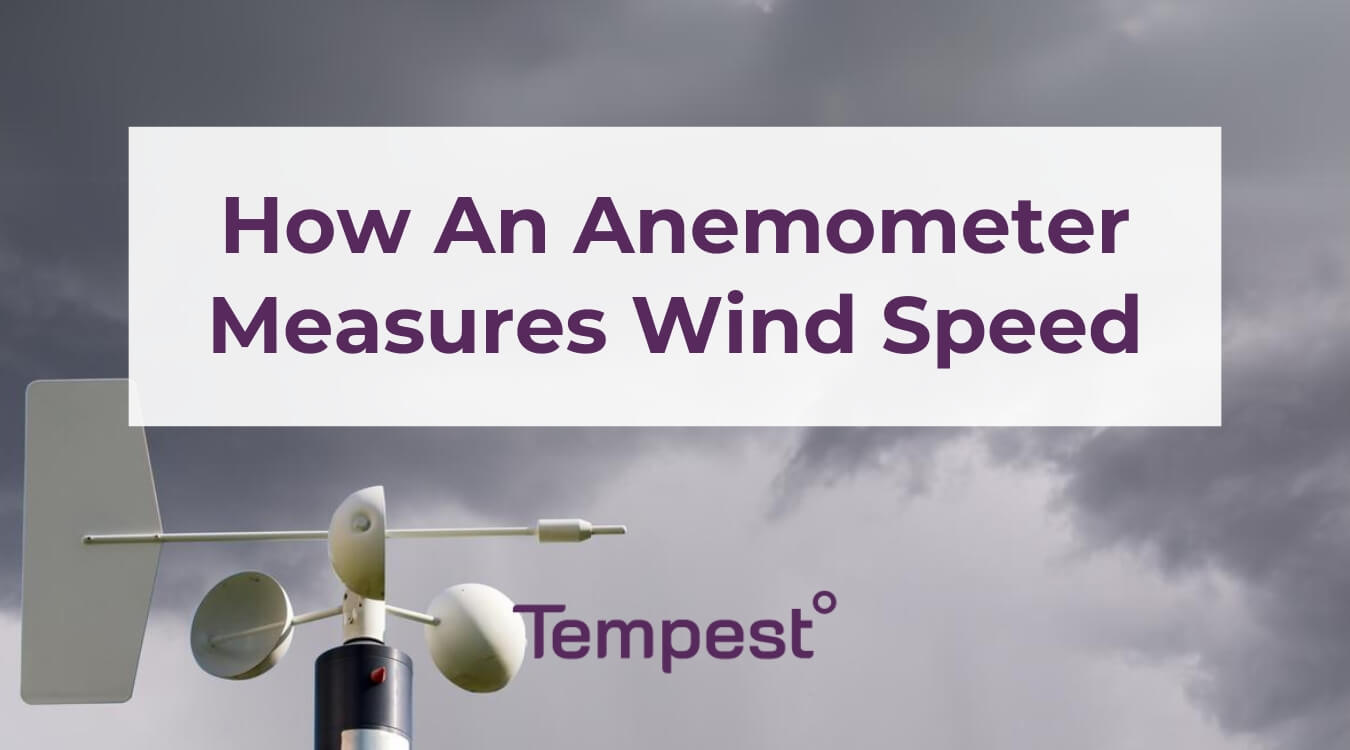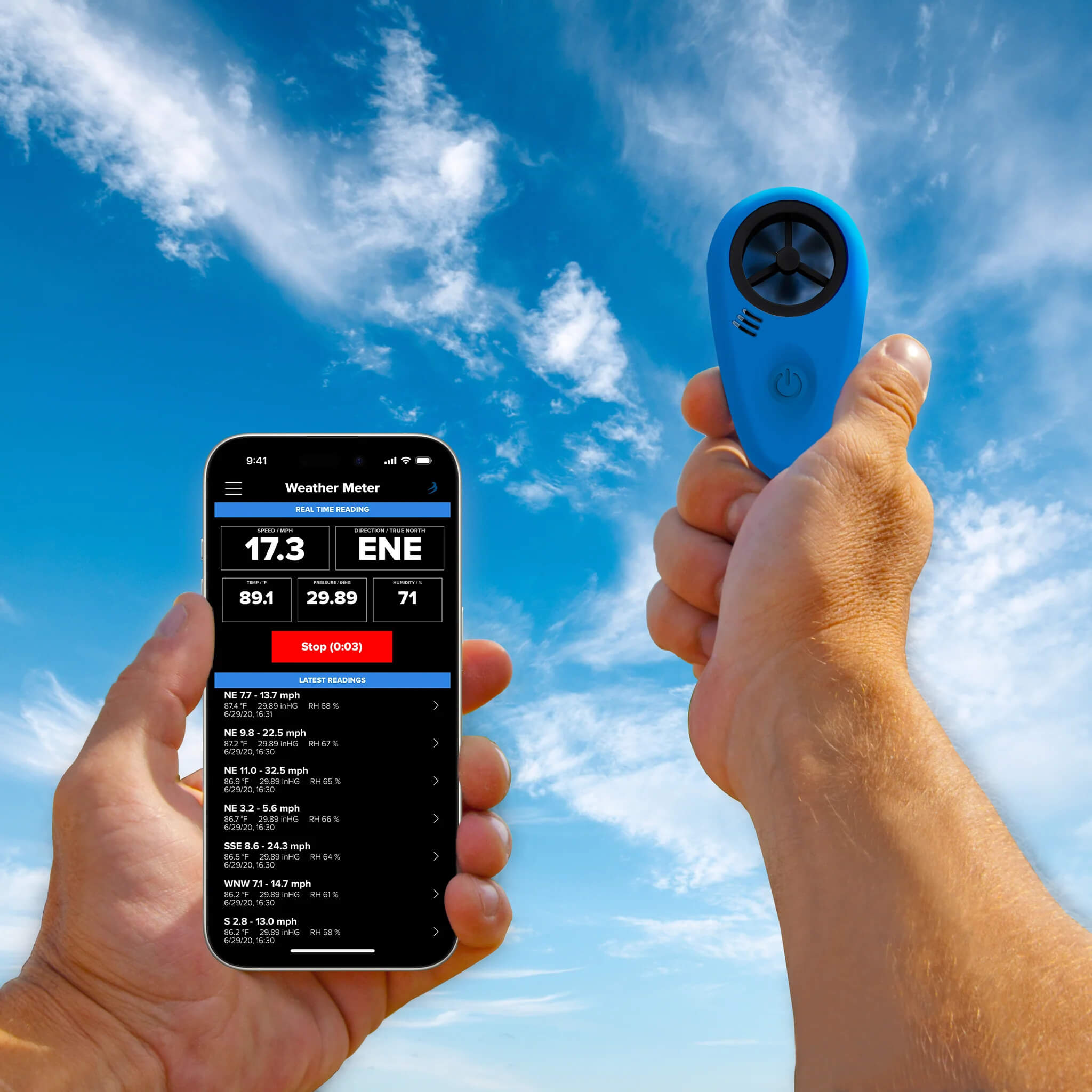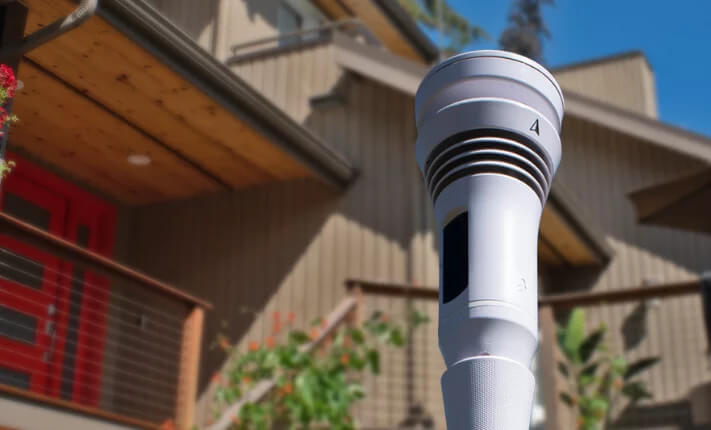Do you need accurate wind speed readings to plan your outdoor activities? If so, an anemometer is the right tool for the job. But, what is an anemometer, and how does it work?
Wind speeds impact nearly all outdoor activities. From pilots to surfers, seafarers, and farmers, knowing how to measure wind speed with an anemometer is highly valuable. Below, we’ll explore what an anemometer is used for and how it works.
Explore the Tempest Home Weather System, which provides continuous wind speed direction readings.

What Is An Anemometer?
An anemometer is an instrument used to measure wind speed. It is used both professionally and recreationally by people engaging in outdoor activities. Its invention dates back to the 1400s when Italian artist and architect Leon Battista Alberti created an early version of the instrument.
Today, the anemometer has evolved into a highly precise and useful weather instrument. The traditional type of anemometer has four small cups that spin on a vertical access as they catch the wind. They are also referred to as cup anemometers, though sonic wind anemometers and sensors are also available.
Shop the handheld Tempest WEATHERmeter for accurate wind speed and direction measurements on the go.
What Does An Anemometer Measure?
A basic anemometer measures the speed of the wind. More advanced versions can be used in conjunction with wind vanes to measure both wind direction and speed, meaning it’s an instrument to measure wind velocity.
Wind speeds and patterns are critical in weather forecasting, marine navigation, and other fields like surfing. Thus, anemometers are the instruments that provide the wind readings you’ll find in daily forecasts, pilot weather reports, or surf reports.
Learn about the main types of weather instruments used to track outdoor conditions like wind speed and direction.
How Does An Anemometer Work?
A cup or rotational anemometer works differently than a sonic anemometer. The rotational version tracks the number of rotations the cups make over a period of time, which is proportional to certain wind speeds.
On the other hand, a sonic wind sensor can take both speed and direction readings. It has no moving parts, so it can look a bit more discrete. These function by emitting ultrasonic waves from a transducer on the north end of the sensor, and a microprocessor within the sensor measures the time it takes for the wave to reach the south transducer.
Measure Wind Speed Accurately In Your Area With The Tempest Weather System
Whether you’re an outdoor hobbyist or a professional who needs precise wind measurements to perform your job correctly, an anemometer is a critical instrument that provides real-time wind data.
When you’re on the go, the Tempest WEATHERmeter is a pocket-sized anemometer that offers precise and accurate wind speed measurements wherever you are. Or, if you’re looking for a comprehensive solution that offers additional readings like relative humidity, lightning activity, and rain data for your home’s location, check out the Tempest Weather System instead.
Shop the Tempest Weather System for accurate local forecast data to drive all weather-related decisions.


